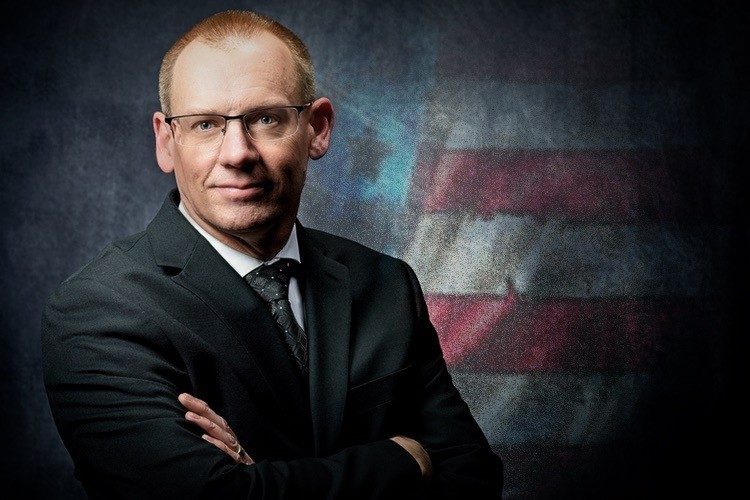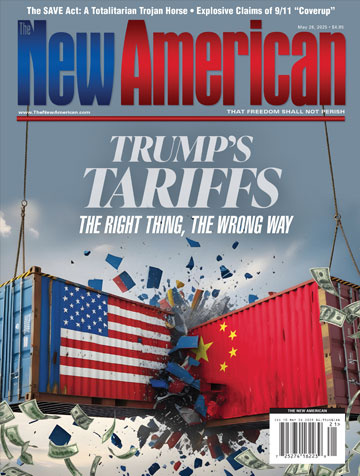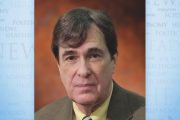
Last week, Silicon Valley Bank was taken over by federal regulators after what has been reported as mismanagement, followed by a bank run by depositors.
The only thing is this wasn’t just an ordinary neighborhood bank. It was one that catered specifically to about 2,500 venture-capital firms in the tech and pharmaceutical industries. Some big names that you would recognize include Airbnb, DoorDash, DropBox, Roku, and Roblox.
It’s estimated that about 86 percent of deposits were uninsured; however, President Biden announced that all deposits would be covered by a special fund that Federal Deposit Insurance Corporation or FDIC members pay into.
We’ll look at this debacle and show you how a banking crisis fits into the overall plan of controlling the people, in this episode of Analysis Behind the News.
WallStreetOnParade.com, a Wall Street watchdog website operated by a former Wall Street veteran, summed up the collapse of SVB in three short paragraphs:
In big, bold type on its website, Silicon Valley Bank bragged that “44% of U.S. venture-backed technology and healthcare IPOs YTD [year-to-date] bank with SVB.”
To put it bluntly, this was a Wall Street IPO machine that enriched the investment banks on Wall Street by keeping the IPO pipeline moving; padded the bank accounts of the venture capital and private equity middlemen; and minted startup millionaires for ideas that often flamed out after the companies went public. These are the functions and risks taken by investment banks. Silicon Valley Bank – with this business model — should never have been allowed to hold a federally-insured banking charter and be backstopped by the U.S. taxpayer, who was on the hook for its incompetent bank management.
We say incompetent based on this fact alone (although there were clearly lots of other problem areas): $150 billion of its $175 billion in deposits were uninsured. The bank was clearly playing a dangerous gambit with its depositors’ money.
With the tight grip of regulation that the government holds on the banking industry, none of this should have been a surprise to FDIC officials.
WallStreetOnParade.com goes on to detail that the bank’s troubles began early last year.
The article said:
Adding further insult to U.S. taxpayers, the Federal Home Loan Bank of San Francisco was quietly bailing out SVB throughout much of last year. Federal Home Loan Banks are also not supposed to be in the business of bailing out venture capitalists or private equity titans. Their job is to provide loans to banks to promote mortgages to individuals and loans to promote affordable housing and community development.
According to SEC filings by the Federal Home Loan Bank of San Francisco, its loan advances to SVB went from zero at the end of 2021 to a whopping $15 billion on December 31, 2022. The SEC filing provides a graph showing that SVB was its largest borrower at year end, with outstanding advances representing 17 percent of all loans made by the FHLB of San Francisco.
As The Epoch Times pointed out, the bank “heavily invested” customer deposits in long term Treasury bonds, usually deemed one of the safest investments. These bonds typically lock deposits for a period of time until maturity for a specific interest rate. In this case, it was for a return of 1.78 percent. With rising interest rates and less deposits coming into the bank, it took steps to improve its financial situation, which caused it to lose nearly $2 billion. When the market found out about it, the value of the bank dropped like a rock and clients began pulling out, leaving it without enough capital to cover deposits.
“The lack of capital and the clarion call across Silicon Valley and social media initiated a bank run, as clients withdrew $42 billion of deposits on March 9. By the close of business, SVB was left with a negative cash balance of $958 million, according to a filing from the California Department of Financial Protection and Innovation,” The Epoch Times reported.
On Friday before noon, the bank was shutdown and taken over by FDIC regulators.
WallStreetOnParade.com also included a chart of other banks that received assistance from the FHLB of San Francisco, including First Republic Bank, City National Bank, and Silvergate Bank.
According to the New York Post, First Republic Bank saw its shares drop nearly 70 percent on Monday this week before stock trading was halted. But it wasn’t the only bank to see trading halted. MSN lists nearly two dozen banks that had their trading halted to stop the wild fluctuations of its share price.
Silvergate announced last Wednesday that they were closing and liquidating.
As WallStreetOnParade.com reported, Silvergate Bank is tied into the FTX collapse.
Another bank largely tied into cryptocurrency is New York’s Signature Bank, which was under regulatory control since end of last year, and was shutdown by state regulators earlier in the week. MSN.com reported, “Signature had $89 billion in total deposits, and 90% of those were not insured by the FDIC.”
Let’s state the obvious that those who took the risk to not diversify and made the decision to have funds not insured should bear responsibility for their actions and not be bailed out. Entities that would continue to help prop up these banks, including government agencies, should also bear responsibility and not American taxpayers.
In an effort to calm fears, President Biden told the country in a speech on Monday that the banking system is safe and that deposits will be available when needed, which exceeds the FDIC maximum account protection of $250,000 per person, per account, per financial institution. He said the Deposit Insurance Fund would cover this, but the losses may be greater than what’s in the fund. Public statements have suggested that additional money can be raised by a special assessment on banks.
Yet, the way the banking system is set up guarantees failure when a certain percentage of depositors want to withdraw their money. The fractional reserve banking system allows banks to take up to 90 percent of a client’s deposits and loan it out to others, meaning that it may not be there if too many clients want their money withdrawn. Plus, when the next person deposits that loan money with another bank, that bank can then lend up to 90 percent, which helps sets up a domino effect if failures occur.
This risky system overseen by the Federal Reserve is a large reason why there are booms and busts in the economy. The Federal Reserve Act of 1913, hatched as a conspiratorial plot by top bankers as outlined in G. Edward Griffin’s book, The Creature From Jekyll Island, has mismanaged, debased, and devalued the American dollar. Each economic and banking crisis has led to more control over money, resulting in less stability and more elasticity for the dollar.
The American dollar was once very sound money, initially backed by gold and the ability to print more dollars was only based on the amount of gold turned in. The Federal Reserve and Congress worked to take away any precious metals backing to American currency in order to accommodate the federal government’s unfettered access to money.
The more money that is printed to help cover the insatiable and irresponsible appetite of Congress, the more prices rise to cover the devaluing of every dollar with another that is not backed by precious metals, but mere thin air. Thus, inflating the money supply or inflation.
In 1946, economist Henry Hazlitt pointed to other effects of inflation: “Inflation tears apart the whole fabric of stable economic relationships. It drives men toward desperate remedies. It leads men to demand totalitarian controls. It ends invariably in bitter disillusion and collapse.”
As we know from the nature of government, it frequently generates and uses crises to enable further unconstitutional control over the people. It does not let a crisis go to waste in order to further its agenda.
The government enjoys monopolies it creates and controls, much like the monopoly it has created over money. It cannot stand the idea of competition and will do whatever it takes to get rid of the competition. Enter cryptocurrency. While lawmakers have tried for years to get their arms around this type of digital currency, the Biden administration is suggesting that the government get into it. Issued by a central bank, the Central Bank Digital Currency or CBDC would have extraordinary access to the accounts of users.
Remember early in 2022 when the Canadian trucker protests were in full swing and some border crossings were blocked and downtown Ottawa was shutdown with parked trucks? The Canadian government passed emergency legislation to freeze bank accounts, cancel credit card accounts, and redefine money-laundering and terrorist financial laws to stop freewill donations that supported the protests.
With a Central Bank Digital Currency, this will be one of the tools available to the government to control you. For non-compliance on whatever issue, users of this currency can see their accounts frozen, their balances zeroed, or access denied when trying to purchase an item not approved, say for instance a gun, ammunition, or perhaps anything with an internal combustion engine. The World Economic Forum describes CBDC as a “risk-free asset” and is working with countries to establish them.
With a digital currency, the need for cash would be gone. Banks would no longer see bank runs and could shut out any user or a group of users who may be deemed a withdrawal threat.
Tucker Carlson recently interviewed South Dakota Governor Kristi Noem who said the Republican state legislature passed a bill paving the way for a government created digital currency, but that she vetoed it. She said she doubts they even read the 110-page bill, instead relying on lobbyists who they’ve listened to for many years. It was presented to the legislature as amending the Uniform Commercial Code, which seems to be something that many states are considering. You might want to check your state.
Notice what would be happening here. The government and its regulators would determine who may buy or sell in the marketplace. The John Birch Society has warned against this very thing for decades. As we pointed out in an issue of our news magazine in 1987, “A move is underway to create a cashless society — because cash makes men free — and freedom is out of fashion.”
The war on our money has been a war of control over citizens. The near digital world that all of us enjoy from smart phones to smart TVs to credit and debit cards to social media, emails, texts, and apps have helped to condition society for the end game of tyranny under a world government.
Back in 2009, after the bailout mania of the biggest banks, The John Birch Society began a sound money campaign to put the brakes on the upcoming collapse. The seven-step plan we proposed then is very much fitting today.
1. Restate the only legal definition of the “dollar” ever provided by the U.S. government.
The U.S. Mint Act of 1792 defined the dollar as the nation’s monetary unit, containing 371.25 grains of silver. Accompany that statement with a companion assertion that gold coinage shall be valued in dollars according to whatever the corresponding market value for gold may be at any given time.
2. Allow private mints to compete with the U.S. Mint.
While the U.S. Mint shall continue to stamp the people’s silver and gold into coinage, the only government involvement in this process shall be prosecution of any persons producing falsely labeled coinage not equivalent in value (purity, weight, etc.) to what is claimed for the coins by their producer.
3. Abolish all legal tender laws that currently provide legitimacy only for Federal Reserve Notes.
Such laws have effectively given the Fed a monopoly.
4. Prohibit government issuance of “bills of credit.”
Allow any bank or mint to issue its own notes, provided there is real money to back them. Banks issuing unbacked currency should expect to be repudiated, even prosecuted.
5. Abolish the Federal Reserve.
It must not be replaced by some federal agency that will have power to repeat the process currently employed by the Fed. There is no authorization in the Constitution for the government to do anything but “coin money” and establish a standard of values. Let there be competition in the coinage of money. Competition will result in excellence.
6. Support bills in Congress to abolish the Fed, audit the Fed, and cancel legal-tender laws.
Members of Congress must be encouraged to support enactment of these important measures.
7. End deficit spending and unconstitutional programs.
If federal government programs not authorized by the Constitution can be abolished (foreign aid, education, housing, transportation, medicine, etc.), the federal income tax can be abolished. Instead of doing something, federal officials must be persuaded to undo an array of existing programs.
Our End the Fed action project will have examples of model state legislation, as well as related articles and videos you can use as resources.
There only way to accomplish this is through the concerted efforts of many Americans working on a specific agenda. It took an organized conspiracy to get us where we are today, and it’ll take an organized effort of the American people stop this attack on our freedom.
As more banks fail, it only helps to expose the attack on what was once sound American money. But more government-induced crises mean more regulation and more control. It’s time to ditch the government money monopoly and implement freedom as the founders intended!
Join the organization working to do just that. Join The John Birch Society to work with others in your local area. Join the front lines of patriots today.
I’m Bill Hahn for The John Birch Society, and until next time, stay informed and get involved, patriots!




